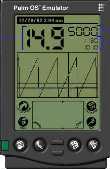|
No recommendation from me, George.
The wide band sensor has a more linear voltage curve
which means you can interpolate a bit more accurately than with the "Z" curve of
the narrow band sensor. So if you really need to know your
absolute A/F like 12.53 (rather than a relative lean/rich) Air/Fuel
mixture then the broadband is probably the way to go - provided of course, you
are not using leaded fuel. I don't know what leaded fuel does to the wide
band - it apparently reduces the sensitivity (or reaction time) of the
narrow band to where it is rendered unusable for its role in the automobiles
fuel/emission control scheme - but, doesn't hurt its ability to give you a
relative lean/rich indication.
However, as the article pointed out there are even other
dangers if you are running boost and using a wide band - so I was just doing my
civic duty {:>) to bring it to the lists attention. For my purposes the
cheaper narrow band works just fine.
Ed
----- Original Message -----
Sent: Friday, December 07, 2007 6:34
PM
Subject: [FlyRotary] Re: wide band O2
sensor
Ed,
So are you recommending narrow band sensors for
Aviation use - I can't remember the argument for wide band
sensors.
George ( down under)
I don't know whether anybody is using or contemplating
using a wide band sensor for Air/Fuel ratio indications. I've looked
into it and could find no advantage (for my usage) that would justify the
additional cost. Apparently there is a "simulated narrowband
output" which I was unaware of.
But, here are a few other considerations that you
might want to think about:
at this URL :
Wideband Sensor Positioning
The wideband sensor must be carefully placed in order to
prevent damage to the sensor itself and to maximise accuracy.
Also, if you use the sensor's output directly (via the simulated
narrowband output) to drive your ECU then you should be doubly careful.
Please follow all of these "rules" :
- The sensor should always be placed on the engine side of a catalytic
converter, unless you are testing the effectiveness of the convertor
itself.
- The gas temperature to the sensor should never exceed 850
degrees C (about 1560 degrees Fahrenheit).
- The sensor should never be run without power to the WB unit (a
hot sensor burns off carbon residues)
- Always have the long axis of the sensor perpendicular to the
gas flow (stops sensor clogging)
- Position the sensor vertically or at most between 10 o'clock to
the 2 o'clock position (this avoids cracking the internal ceramic
structure should moisture condense internally)
- We don't recommend using a short sections of exhaust pipe
shoved up your tailpipe. A specially welded additional bung
is the best mounting strategy.
The sensor reads the partial pressure of gases in the exhaust and infers
the AFR, rather than by measuring some magical AFR directly. This may be an
issue on forced induction, and in particular, on turbo-charged
engines.
- AFRs will indicate richer than they are, causing you to run leaner
than you think.
- Lean AFR's will be richer (or less lean) than indicted.
A solution is to ensure you locate your sensor away from the turbo, and
certainly on the exhaust (low pressure) side of the turbo rather than the
engine side. 
No virus found in this incoming message.
Checked by AVG Free
Edition.
Version: 7.5.503 / Virus Database: 269.16.15/1174 - Release
Date: 6/12/2007 10:11 AM

palmapptn.jpg
|